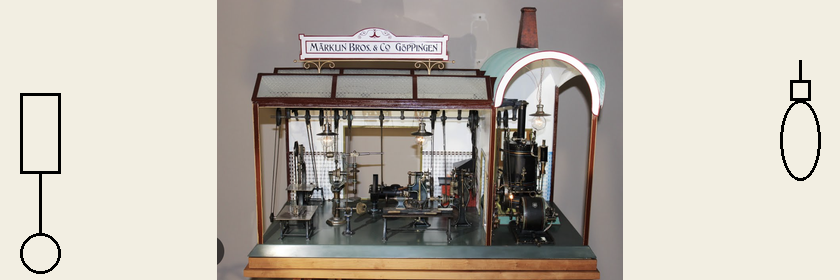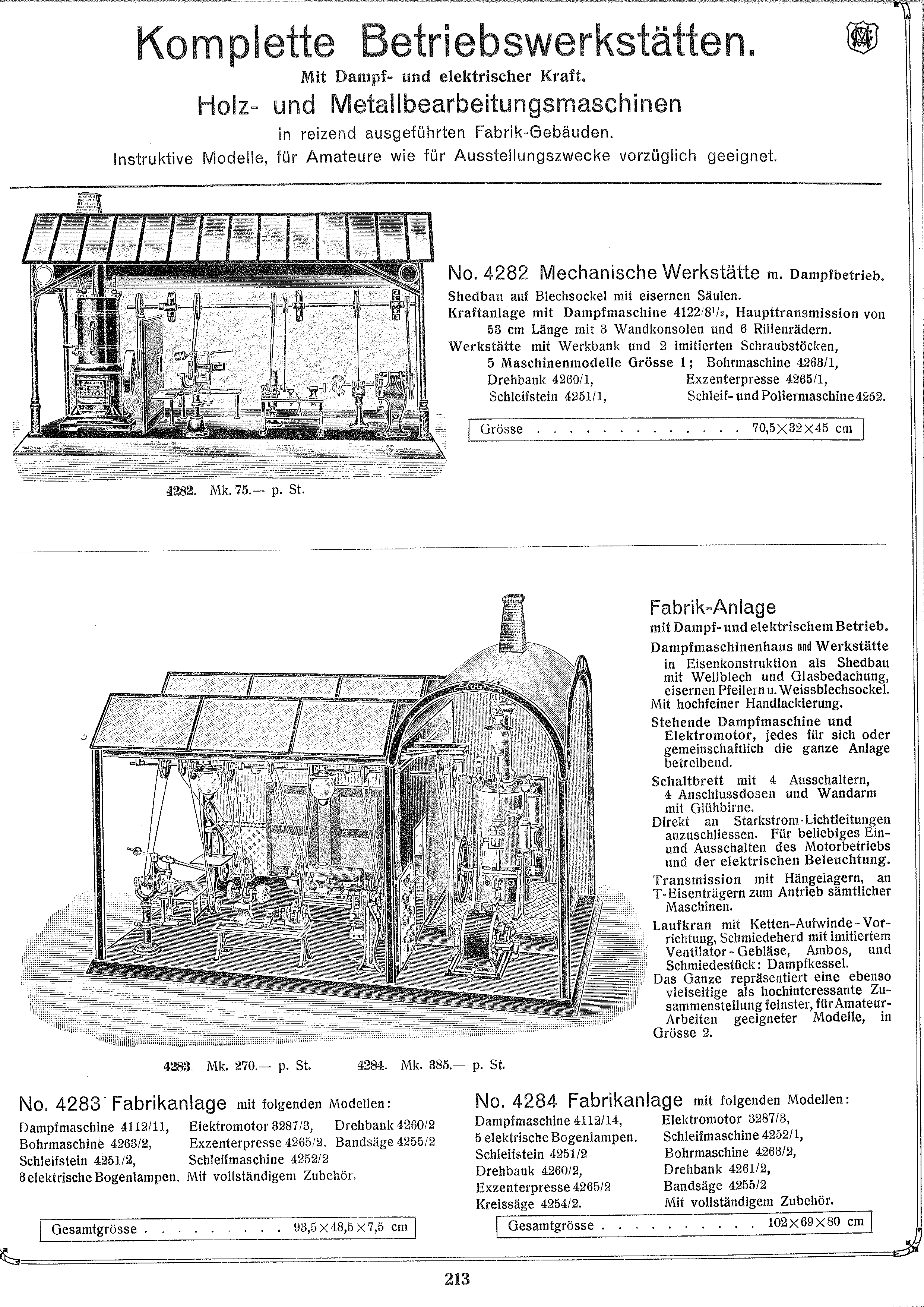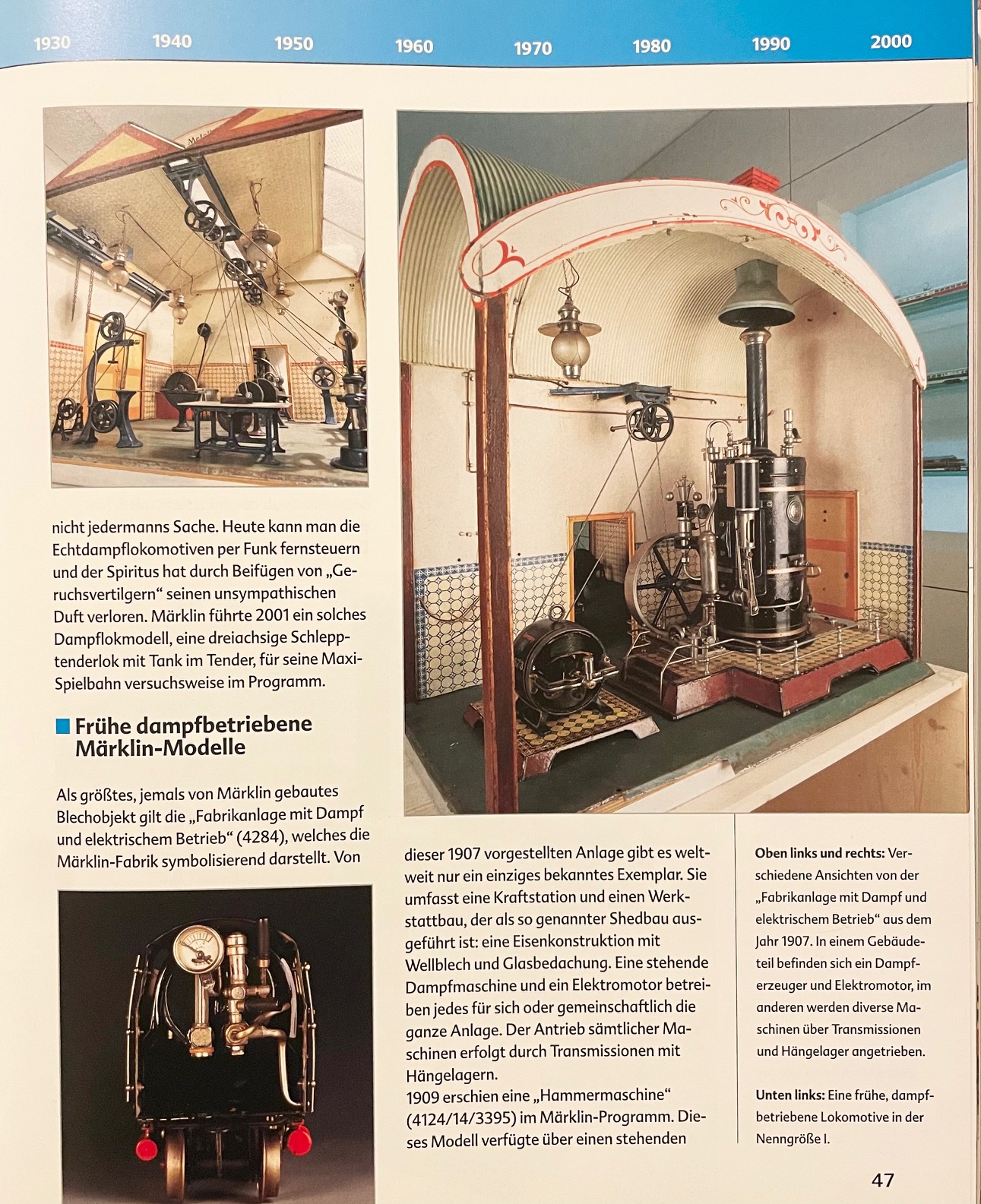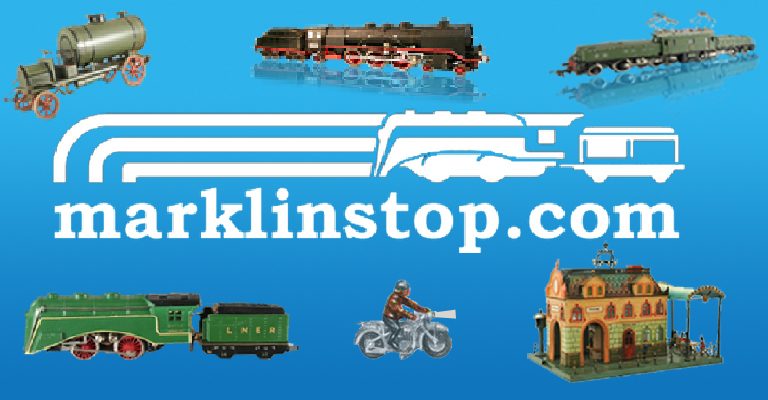Magical Marvels: Marklin Workshop Steam Halls

The late 19th and early 20th centuries were a period of profound industrial transformation. Companies like Märklin not only responded to the industrial boom but also inspired future generations through intricate model replicas of working workshops. Märklin’s “Komplette Betriebswerkstätten” (Complete Operating Workshops) stood out as a unique blend of engineering marvel, educational tool, and collectible art piece.
The Appeal of Märklin’s Workshop Models
Märklin’s workshop models, like the ones showcased in the provided vintage catalog page, were miniature industrial masterpieces. These models combined form and function, often featuring working components powered by steam or electricity. Their appeal lay in their ability to capture the essence of the Industrial Revolution, offering enthusiasts and hobbyists a hands-on way to explore industrial processes on a smaller scale.
A Closer Look at the Models

- No. 4282: Mechanische Werkstätte (Mechanical Workshop)
- Dimensions: 70.5 x 82 x 45 cm
- This compact workshop included a steam-driven power plant alongside a transmission system connecting five machine models. These machines, such as drills, lathes, and polishing equipment, showcased the versatility and precision of early industrial equipment. The attention to detail in the iron supports, tinplate construction, and functional miniature tools highlighted Märklin’s dedication to authenticity.
- No. 4283: Fabrikanlage (Factory Plant)
- Dimensions: 93.5 x 48.5 x 75 cm
- A step up in complexity, this factory featured both steam and electric motors, offering dual-power capabilities. It came with a variety of operational tools, including band saws, grinders, and electric arc lamps. The inclusion of adjustable power systems emphasized its educational value, enabling users to experiment with different modes of operation.
- No. 4284: Fabrikanlage (Factory Plant)
- Dimensions: 102 x 60 x 80 cm
- The most advanced model, this factory included an expanded suite of machines and equipment, all housed in an elaborate iron and glass construction. With electric motor integration and specialized components like circular saws and presses, it reflected the pinnacle of Märklin’s engineering artistry.
Steam collector Brent Rowell from the US found parts for an original example of this rare steam workshop in Michigan. After months of hard work, he completed the workshop using a mix of original and replica parts. The final workshop is an absolute marvel and even runs and operates just as it did when it left the factory. A video of his incredible project can be found on YouTube.
Record Price for Marklin Steam Workshop
The first public sale of such a workshop that we know of was by Auktionshaus Hohenstaufen on February 5 and 6, 2016, featuring individual collectible items from former aristocratic ownership. It highlights the sale of a large factory model made by Märklin in 1905, described as the largest toy model ever made by the company.
- Item Highlighted: A large factory model produced in 1905 by Märklin, with dimensions 103 x 70 x 85 cm.
- Record Price: The item achieved a world record price of €442,800, the highest price ever for a Märklin object.
- Provenance: It was previously displayed in the Märklin Museum in Göppingen.
The image prominently shows the large Märklin factory model, showcasing its detailed craftsmanship.

Another steam hall is featured in one of Marklin’s books. It is unclear if this is the same steam hall which was sold at Hohenstaufen Auktion and also was displayed at the Marklin Museum. Comparing the scratches on the hall housing, there are many similarities but also some noticeable differences. The one featured in the book has a section cut out of the green base side and also has a different electric dynamo in front.

Educational and Entertainment Value
While these models were primarily marketed as tools for learning and amusement, their potential applications extended further. For amateur machinists, they served as an introduction to the principles of engineering and mechanics. For educators, they were tangible demonstrations of how energy sources powered complex industrial processes. And for collectors, they were symbols of a bygone era, combining artistry with technological history.
The Märklin Legacy
Märklin’s model workshops encapsulate the company’s commitment to quality and innovation. These intricate replicas were more than toys; they were gateways to understanding industrial advancements and celebrating craftsmanship. Today, they remain cherished by collectors and enthusiasts as historical artifacts that bridge the worlds of industry and hobby.
Conclusion
Märklin’s “Komplette Betriebswerkstätten” represent a fascinating chapter in the history of model-making and industrial education. They remind us of a time when curiosity and craftsmanship drove innovation and continue to inspire those who value the intersection of history, technology, and artistry.

